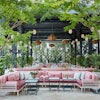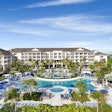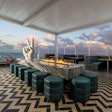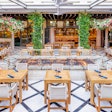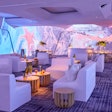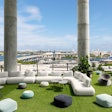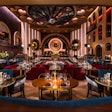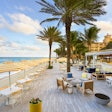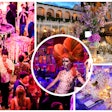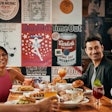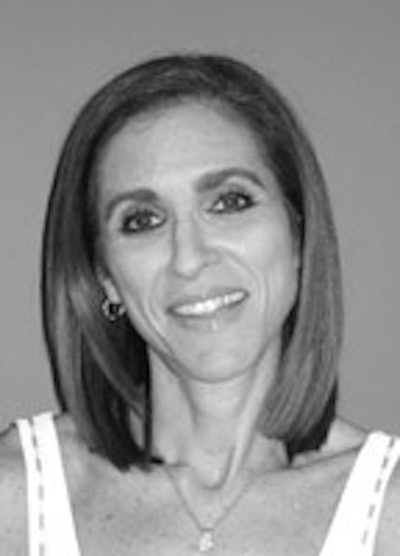
The Swimwear Association of Florida’s annual SwimShow is the largest swimwear trade show in the country, with more than 2,500 lines represented. Originally encompassing 100,000 square feet of exhibit space at the Miami International Merchandise Mart when it was founded, the show moved to the Miami Beach Convention Center in 2004 and now has more than 250,000 square feet of exhibit space for its 27th annual show, which is scheduled to take place July 18 through July 21. Along with returning labels such as Max Mara, Diana von Furstenberg, and Billabong, multiple new European labels will use the show to launch in the United States. SwimShow executive director Judy Stein spoke with us about the grassroots marketing efforts that have helped her continue to grow the trade show, despite economic setbacks.
How do you promote the show to potential exhibitors and attendees?
Our direct mail, advertising, and marketing campaigns assure them that this is one-stop shopping. There’s no way at a regional market that they’ll be able to see the caliber and variety of lines that are at the show, so if they’re in the swimwear industry, this is the trade show they need to come to. We’re constantly pounding the pavement to make sure we bring in the resources that we feel our retailers want, which is based on word of mouth and what we read about in publications. Having a new [exhibitor] come on board is something that’s exciting to us—we know the retailer will be excited as well.
When do you start your primary marketing push?
For our retailers, we’ll do a big campaign starting in January, but we do campaigns for both retailers and exhibitors year round. Even now we’re talking to potential vendors for next year. The day the show closes, we’ll be researching new retailers to come the next year as it's really a yearlong process for both.
What has been your biggest challenge in getting more exhibitors and attendees this year?
Creating a sense of security and strategizing new ways for our members to make this trip as financially viable as possible. We changed the length of the show by cutting it down by a day, worked with the City of Miami Beach and the Greater Miami Convention and Visitors Bureau to create alternate pricing structures for hotel rates, and coordinated discounts with restaurants and parking authorities. While we work to create these conveniences every year, there was a more urgent need than we had ever faced.
What kind of response did you receive this year from the bigger brands that have a history with the show, such as Billabong and Diane von Furstenburg?
We still have our long-standing companies that have supported us throughout the years. Some of them have reduced their space, but for those that did, others have increased. I think in these economic conditions, everyone is watching their money, but the majority of the companies are continuing to participate.
How have you positioned your PR efforts this year?
We hired a public relations company, CeCe Feinberg Public Relations, back in September. We’ve talked about it for a number of years, but this was the first time we hired one. They were responsible for promoting the show not only on a local and national level but also internationally, pitching to both trade and consumer publications like Sports Illustrated since this trade show is extremely important to their swimsuit issue.
What steps did you take to ensure the show maintains a good reputation?
Making sure we have the proper mix of retailers and exhibitors. Exhibitors must show us their products, meet our requirements for quality, and fill out financial forms so we can research them. We need to make sure they’re solvent and will be able to produce [the products] once they’re at a trade show and orders are placed, so we do our best to make sure they are legitimate companies.
We also reduced our prices when we moved over to the beach five years ago, and the association subsidized it so the show would be a successful move. I know other shows that have continued to increase the pricing structure; that's the one thing we haven’t done. Our show is the least expensive show to do.
How do you measure the show’s success each year?
We do a multipart questionnaire to get feedback from both our exhibitors and retailers. Also, it's just having the ability to run this show properly and to be able to do these other events like the fashion show, Swim Lounge, and breakfast bar, and not be dependent on sponsors. Swim Lounge is a nicety we offer for two nights during the show for buyers to unwind and enjoy cocktails after [the floor] closes; just to be able to provide that [ourselves] has made us successful.
What are some of the changes you’ve made from last year?
One of the things [attendees] mentioned last year was to have the fashion show be more convenient and accessible, so this year we’re holding it on site. It’s been in multiple locations previously—last year at the tents on 10th Street and before that at Nikki Beach—and we’ve provided transportation. Our breakfast bar was also extremely successful last year, so we’ve increased the quantity of food this year so we can provide it for more people.



